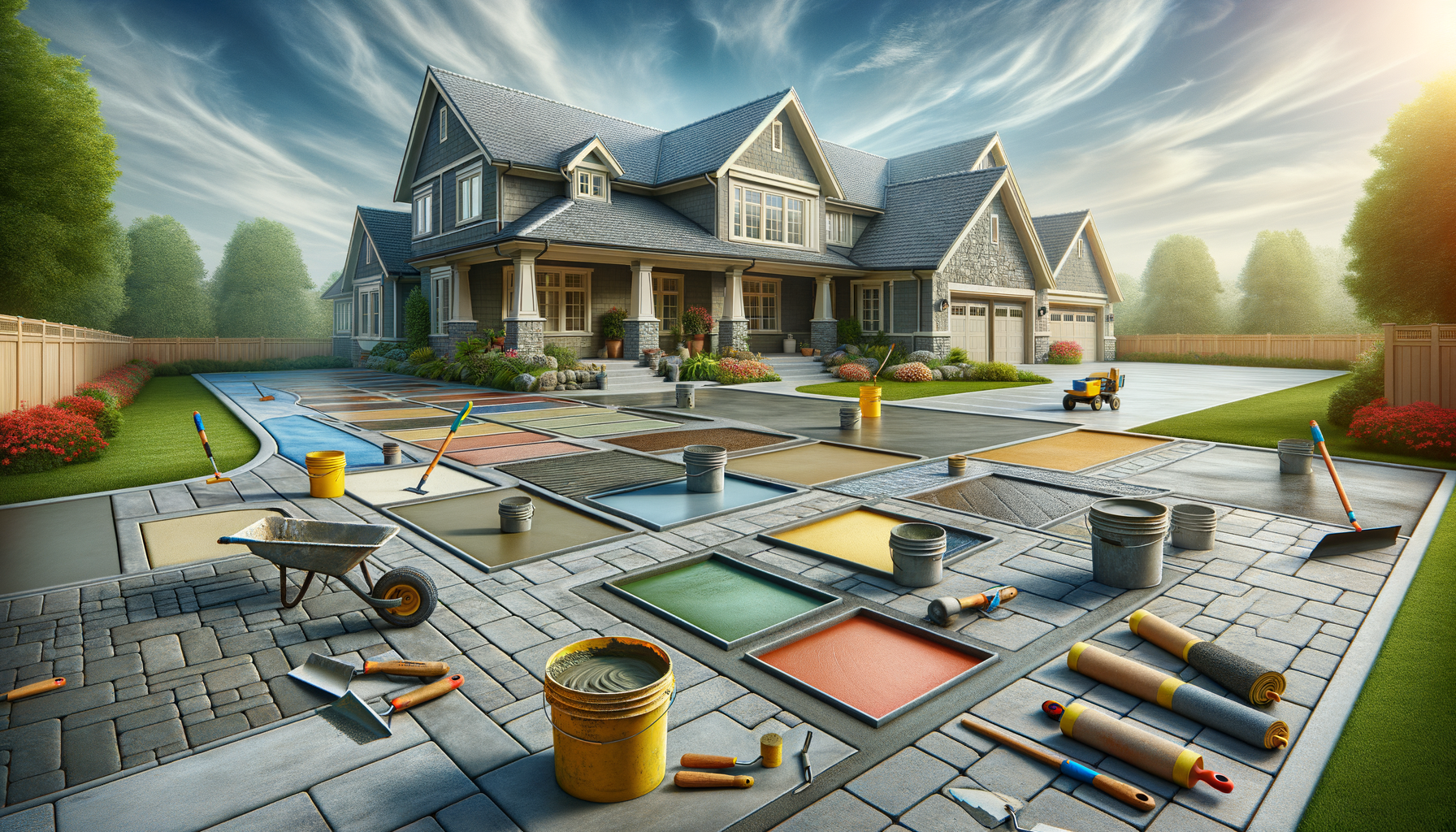Understanding Concrete Resurfacing
Concrete resurfacing is a transformative process that involves applying a new layer over existing concrete surfaces. This method is particularly useful for repairing damage such as cracks, discoloration, or surface imperfections. By opting for resurfacing, homeowners can enhance the appearance and durability of their concrete without the need for complete replacement, which can be both costly and time-consuming.
The resurfacing process typically involves cleaning the existing concrete, repairing any damage, and then applying a new surface layer. This layer can be customized with different colors, textures, and patterns, allowing homeowners to achieve a desired look that complements their home’s aesthetic. The versatility of concrete resurfacing makes it a popular choice for driveways, patios, pool decks, and indoor flooring.
Choosing the right resurfacing option depends on several factors, including the condition of the existing concrete, the desired appearance, and the budget. Understanding these aspects can help in making an informed decision that ensures long-lasting results.
Benefits of Concrete Resurfacing
Concrete resurfacing offers numerous benefits, making it a preferred choice for many homeowners looking to upgrade their surfaces. One of the primary advantages is cost-effectiveness. Resurfacing is significantly less expensive than replacing concrete entirely, as it requires fewer materials and less labor. This makes it an attractive option for budget-conscious homeowners.
Another benefit is the aesthetic enhancement it provides. With a wide range of colors, textures, and finishes available, resurfacing allows for creative expression and customization. Whether aiming for a sleek, modern look or a rustic, natural appearance, resurfacing can achieve the desired effect.
Durability is another key advantage. Resurfaced concrete is resistant to weather conditions, stains, and wear, ensuring that the surface remains in excellent condition for years. Additionally, the process can address and prevent further damage, such as cracking or chipping, enhancing the longevity of the surface.
Types of Concrete Resurfacing Options
There are several concrete resurfacing options available, each offering unique features and benefits. One popular choice is stamped concrete overlay, which mimics the appearance of materials such as stone, brick, or wood. This option is ideal for homeowners who desire a high-end look without the associated cost.
Another option is micro-topping, a thin layer applied to create a smooth, polished finish. Micro-topping is suitable for indoor surfaces and can be stained or colored for added visual appeal. For outdoor areas, spray-down systems are a practical choice, offering slip resistance and durability.
Self-leveling overlays are also available, providing a uniform surface that can correct uneven or damaged concrete. These overlays are particularly beneficial for commercial spaces, where a smooth, level surface is essential for safety and functionality.
Each resurfacing option has its own set of advantages, and selecting the right one depends on the specific needs and preferences of the homeowner.
Preparing for Concrete Resurfacing
Proper preparation is crucial for successful concrete resurfacing. The process begins with a thorough cleaning of the existing concrete to remove dirt, oil, and other contaminants that could affect adhesion. Power washing is often used to ensure a clean surface.
Next, any cracks or damage must be repaired. This step is essential to prevent further deterioration and to ensure a smooth, even surface for the overlay. Repair products such as patching compounds or crack fillers are commonly used for this purpose.
Once the surface is clean and repaired, a bonding agent is applied to promote adhesion between the old and new concrete layers. This step is critical for the longevity and durability of the resurfaced surface.
By following these preparation steps, homeowners can ensure that their resurfacing project is successful and delivers the desired results.
Conclusion: Making the Right Choice
Concrete resurfacing is a practical and effective solution for revitalizing worn-out surfaces. By understanding the various options and benefits, homeowners can make informed decisions that enhance the beauty and functionality of their spaces.
Whether aiming to improve curb appeal, increase property value, or simply enjoy a more attractive environment, concrete resurfacing offers a versatile and cost-effective solution. With proper preparation and the right choice of materials, homeowners can achieve stunning results that stand the test of time.
Ultimately, the key to successful concrete resurfacing lies in careful planning and execution, ensuring that the investment delivers lasting value and satisfaction.




Leave a Reply